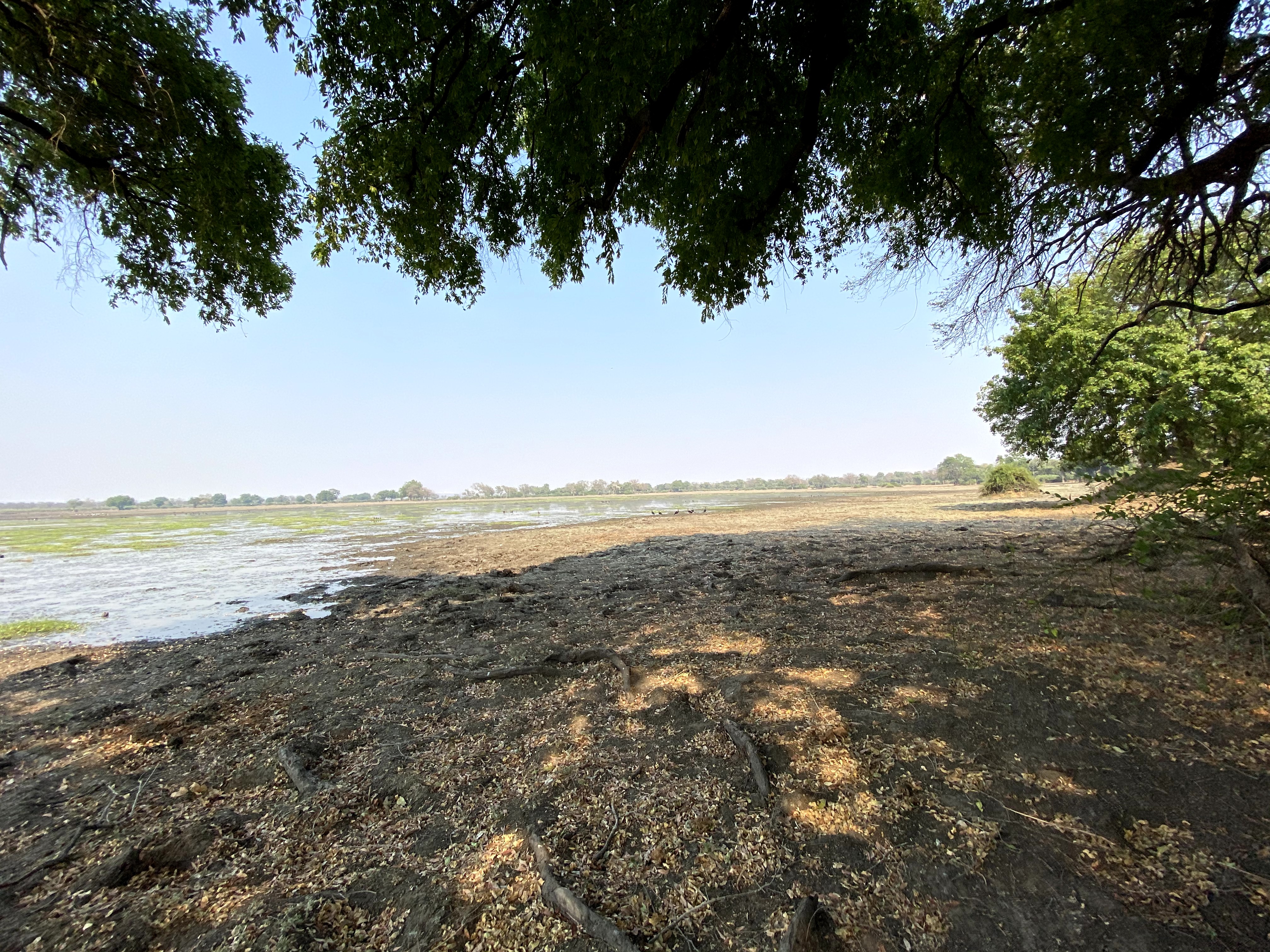The golden age of safaris spanned the late 1800’s until the 1970’s, when Africa seemed a limitless scape of bony highlands, desert, savannah, mountains, and unfinished parades of wildlife. The likes of Teddy Roosevelt, Ernest Hemingway, Karen Blixen, Gregory Peck, Grace Kelly risked the unknowables, and were rewarded the richest wildlife spectacle on the earth.
A perfect storm gathered in the 1970s that began to abrade the edges of animal herds, and then accelerated the grind. A rising demand from Asia and cheap international flights and sea transport acerbated the trade in ivory and skins; droughts began to lessen agricultural outputs, while better health and higher birth rates led to unsupportable human populations that increasingly needed to seek bush meat to survive, or to till soil in protected areas. War with automatic weapons slaughtered wildlife in its path. Roads brought invasive species, and along with fences, cut corridors. Pollution from mines, development, and sewers seeped across borders. Lack of money and people needed to police parks enabled disease, poisons, and sophisticated traps to devastate game. By some estimates, major national parks and wildlife reserves across Africa lost up to 60% of their lions, giraffes, buffalo and other large wild animals between 1970 and 2005. One guesstimate is that 230,000 elephants have been poached between 2009 and 2015, and only 500,000 remain throughout the continent.
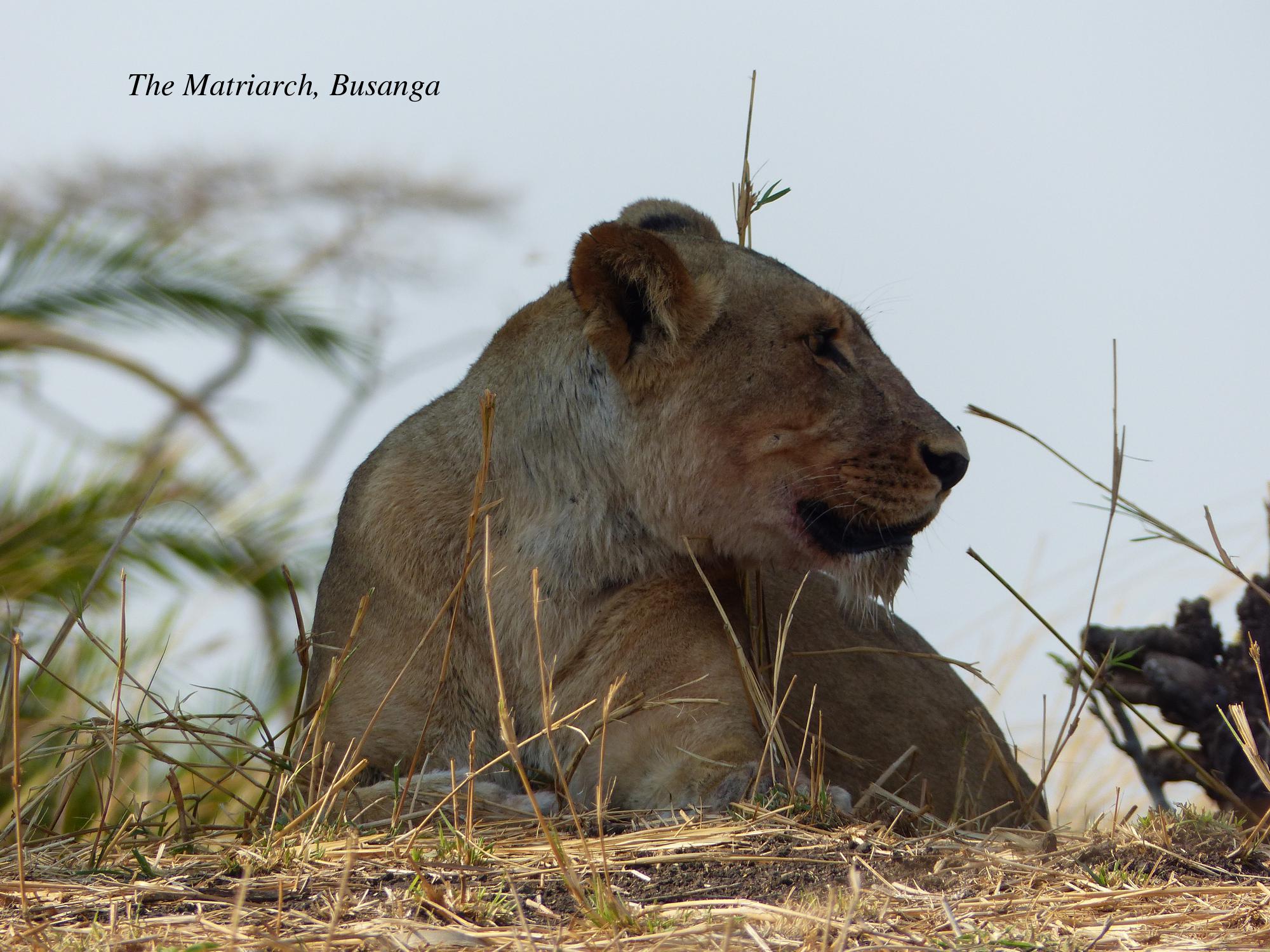
Today most African parks exist as islands, pressed by a rising sea of human activity, and the fauna that require large tracks to roam and migrate are increasingly out of luck. Without natural habitat connectivity, and a healthy environment capable of supporting a diversity of biota, wildlife cannot sustain.
But there remains one unspoiled wilderness large enough, remote enough, diverse enough to support an extraordinary array of wildlife, the Kafue National Park in Zambia. With its surrounding Game Management Area (GMA) it totals an epic 68,000 sq. kilometers, about the size of Massachusetts, making it, by some measures, the largest in Africa.
And it is here that the unequaled nobility of The Last Real Safari can be experienced. A trio of lodges has stitched together a journey that allows access to the best Africa offers, in a way practiced by earlier intrepids. Nowhere else in the continent can one see blue duiker, sable, roan, red lechwe, Lichenstein’s hartebeest, wildebeest, eland, pajama donkeys (née Zebra), puku, elephant, reedbuck, kudu, oribi, Defassa waterbuck, Cape buffalo, lion, leopard, cheetah, painted wolf, hippo, crocodile and yellow-backed duiker all in one park. The owners of the lodges are activist conservationists, using the bush camps and the safari to help transform Conflict into Co-existence, meaning that the long struggle between wildlife and humans (poaching, encroaching, habitat reduction and destruction) can be turned into peaceful co-existence if the locals find worth, dignity and a living wage in preserving and celebrating wildlife around and among them.
The safari begins in the 800-square-kilometer Busanga floodplain, a Serengeti without the madding tourists, in the far northwestern corner of Kafue National Park, Zambia’s largest and oldest, established as a reserve in 1924, and upgraded to park status in 1950. From Kasonso Busanga lodge, a low-density luxury camp with uninterrupted views of the vast yellow grasslands, nestled in a small tree island of fig trees and wild date palms, no puff of human existence can be perceived. This is earth’s first morning.
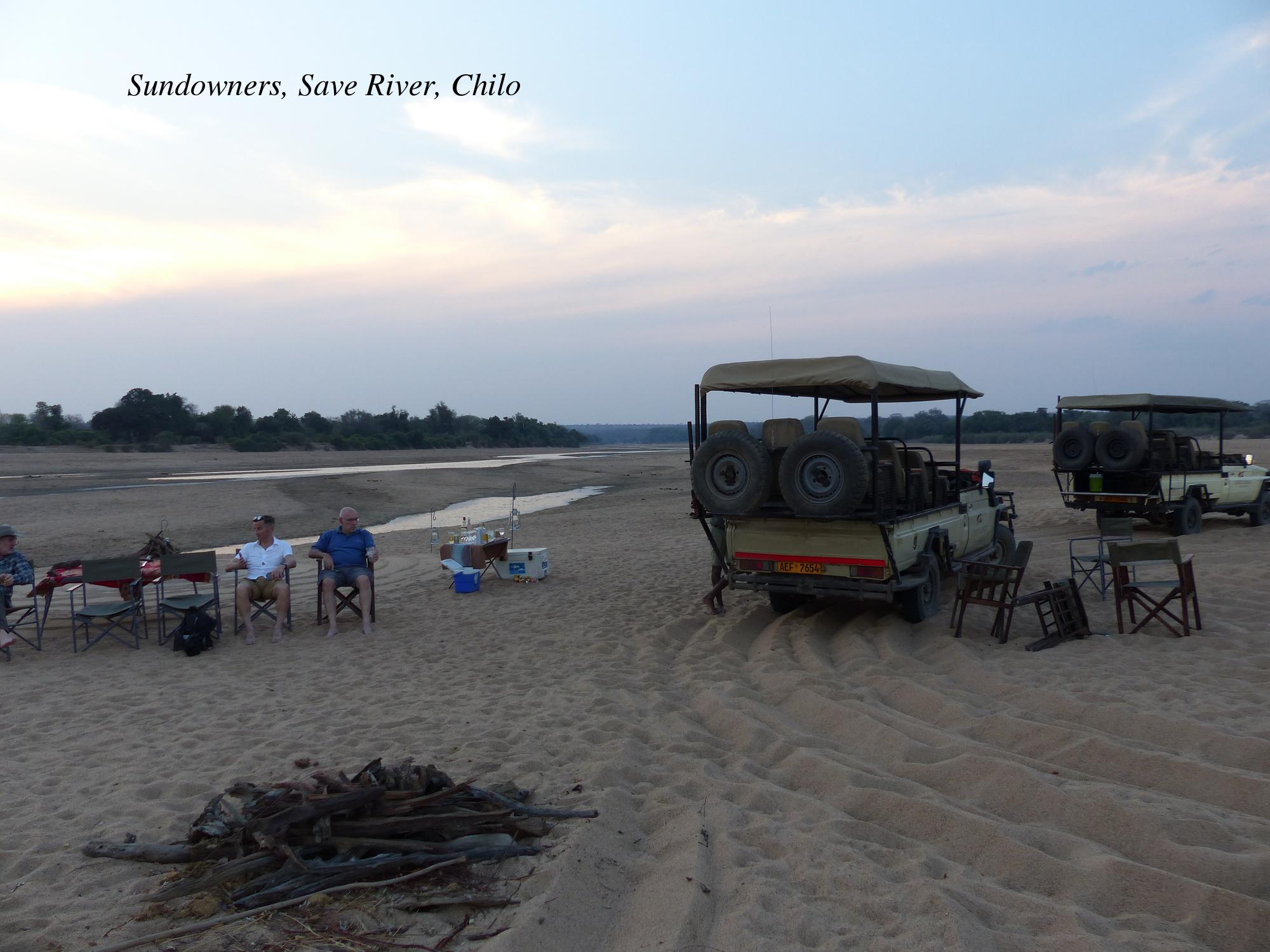
The Dry Season is between July and November, the only feasible time for humans to visit. We charter in by plane, and make the short walk from the airstrip to the four en-suite chalets, shaped like traditional Meru-style tents. Each has a wooden porch with a view to die for, and in the back a flush toilet, hot showers and complimentary toiletries. During the night, large mosquito nets cover the two comfy beds.
The place to order a rock shandy is the lounge, set in a lapa area on a raised deck, roofed with thatch, at one end of the camp. A long veranda allows quiet reading of the morning bush newspaper, the headline herds of lechwe and puku feeding. A little further back is the dining boma, an open area shaded by a tall tree, where some meals are served by firelight. The staff are all locals, and about half are women, a conscious dynamic rarely found in other bush camps.
We take off in a re-kitted canopied Toyota Land Cruiser for the first of several game drives, and spill into a crowded city of antelope. The highest antelope diversity of any African park grazes here.
Shortly we encounter a fresh kill: a pride of ten lions, three adult females and seven cubs, eating the remains of a red lechwe, a favorite dish. We also count down The Other Big 5, members of the Ugly Club, the undergods only a mother could love: the hyena, warthog, crocodile, vulture and wildebeest, which looks as if made from spare parts – a buffalo head, antelope body and horse’s tail. And there are rabbles of them here.
And there are murders of birds high and low, cranes, hornbills, herons, storks, geese, pelicans, kites, bee eaters and even crows, some 400 species in all.
On an afternoon drive we watch as a lone baby wildebeest steps over a hill, and wobbles over to our vehicle, where it begins to bleat something that sounds like “ma…ma…ma.” I am not alone wanting to jump from the open Toyota and rescue the infant beast with the big pleading eyes, but we are in lion country. After he beseeches us in vain, he turns and trembles back up the hill looking for his mom. “He won’t last ‘til evening,” a seatmate says, and my hearts sinks with the thought. But, this is Chinatown, Jake.

A few meters distant we come across a pomp of elephants, lumbering through the long grass, jockeying the young ones between grown-ups. We park with our nose towards them, as if there is a charge, it is more difficult to turn over a vehicle front to back. This doesn’t dissuade a bull, who makes several mock charges, and we all squeeze against the seatbacks with each bluff. Then as they plod deeper into the dambos we follow from a discreet distance, until we see, near the horizon, a procession of wildebeest, and in the rear is a baby floundering along behind its mother. A cinematic happy ending, perhaps, as the sun paints the plains with a honey light.
So, to celebrate, we head to a watering hole bloated with hippos, and there, at the edge, a table has been set with snacks and a full bar to offer up sundowners at sunset. We toast the guides, the staff and the hippos with generous G&Ts, and watch the sun burn out the remnants of a very good day. The light folds up, as do we, and off we trundle back to base camp.
After three nights at Kasonso Busanga we pack up and head southeast to the second in the trine of conservation lodges, Kikuji, on the secluded forested banks of the Lunga River. Along the way we pass a line of men on bicycles carrying fishing poles and gear, and one with portable solar-panels to charge his cell phone. When National Parks were established throughout Africa in mid-century the common practice was to displace all human occupants, and forbid re-entry for any hunting, farming or fishing. But here, when Kafue National Park was established in 1950, officials settled on a compromise, allowing the relocated Kaonde tribespeople the rights to continue to fish into perpetuity, a small but telling example of easing conflict through cooperation.
Kikuji is the most remote camp in Kafue, a rare trice in an over-charted world. It is closest to the Africa of David Livingstone, raw, without spoil or human intrusion: accessible inaccessibility. Hippos bellow below the deck, and a swoosh of wings streak up the river. The accommodations and layout are the same as Kasonso Busanga, but the landscape is less busy. This is the space to come and relax for a couple days, indolently fishing in the Lunga, checking a Life List, and meeting wildlife on its terms, the lazy stroll as opposed to the speed-dating Ferrari Safari popular in other parts of Africa.
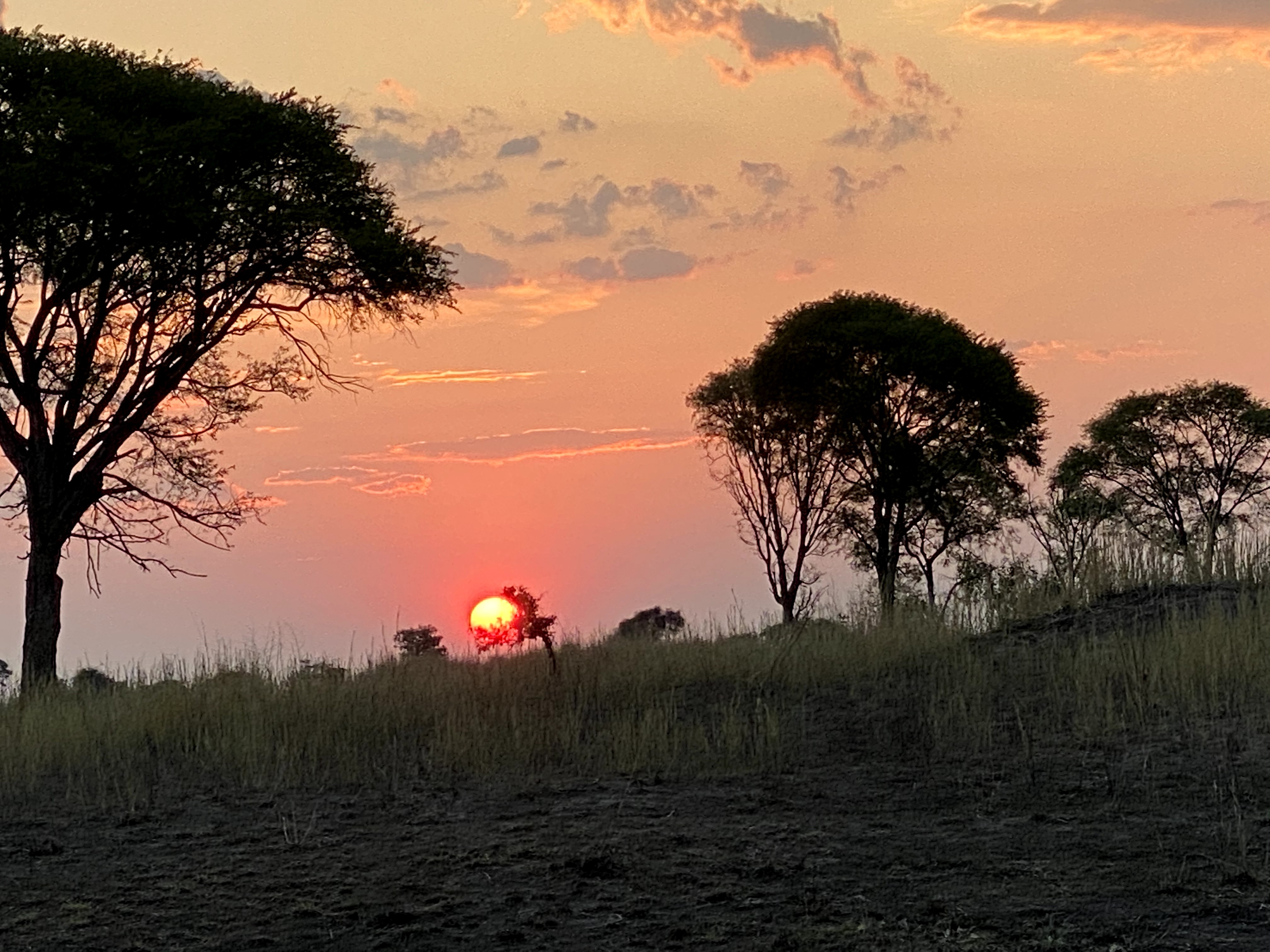
But then it is time to complete the portfolio with a visit to the Kafue River Lodge, and this safari offers a unique way to get there: by boat, an authentic jungle cruise. There are few operations in Africa offering river passage between lodges, but it is possible here because the unindustrious Lunga is a tributary to the Kafue River, where the Kafue River Lodge smartly sits on a 400-acre private plot.
We board the little aluminum craft powered by a 30 hp Mercury outboard, and purl down the blue-sheened ribbon, past a dense thicket of miombo, mopane, and acacia trees, punctuated by littles castles of termitaria. We watch a theater of crocodiles as they ooze from the banks into the river. They never get too close, which we attribute to professional courtesy, as one of the safari guests, a Hollywood agent, is on board.
We watch as fish eagles pluck lunch from the currents. And, we putter past the grey hulls of hippos. At one point a barrel-shaped mother seems to think we are too close to her brood, and starts to belligerently splash towards us, steam-shovel jaws clacking, eyes stinking. “She’s charging!” I scream, as blood races. We brace for impact. But she stops short of the boat, turns away and sinks. False charge. Shoulders drop, grips loosen, and a rinse of relief washes over us. “Nothing in life is so exhilarating as to be shot at without result,” so said Winston Churchill.
The Lunga conflues with the Kafue, and from here it is a short journey upstream to the Kafue River Lodge, the crown in the Northern Kafue eco-lodge collection. This is the place to sit on the Zambezi teak porch and watch the river flow. Elephants lumber across the river; hippos harrumph; and the catfish jump. Wildlife is rich and varied here, and in a first game drive we wind by impala pelting around neurotically, vast almond eyes on slim necks; fluffy pukus, the colors of sunrise on their backs; the long sad-faced hartebeest, bouncing along the savannah as though on a trampoline; waterbuck with the white toilet- seat logos on their rumps; kudu with their trademark corkscrew head-wear; and natty pin-striped zebra chewing ruminatively.
Zambia is credited with pioneering the first walking safaris in Africa; Kafue River Lodge pioneered mountain biking safaris, and each day we turn fat tires down hippo trails, through the bush, alongside wire-tailed warthogs, squabbling baboons, all manner of antelope, and unseen big cats. The primary feeling when pedaling here is exhilaration, a delightful frisson that comes when spinning by the edge.
In the sweet liquid light of first morning we’re awakened by hippos blowing tubas just meters from our chalets. About five feet tall, they weigh five tons — the same as our 4WD vehicle. After coffee, eggs, bacon and rusks, we pedal to the base of a cliff festooned with ancient rock art; then further to Treasure Mountain, where rumor has it a chest of gold remains hidden, buried in 1964 when founding president Kenneth Kaunda encouraged white settlers to leave the country. The only treasure we find is the view, priceless. And one late afternoon, as the slanting light filters through the trees as though in a cathedral, we cycle to the base of Elephant Hill, a rocky mound up which the staff has carried the “tool box,” an aluminum case holding all the fixings and mixings for a proper ice-cubed sundowner, sipped while overlooking the sweeping curl of the gin-clear Kafue River.
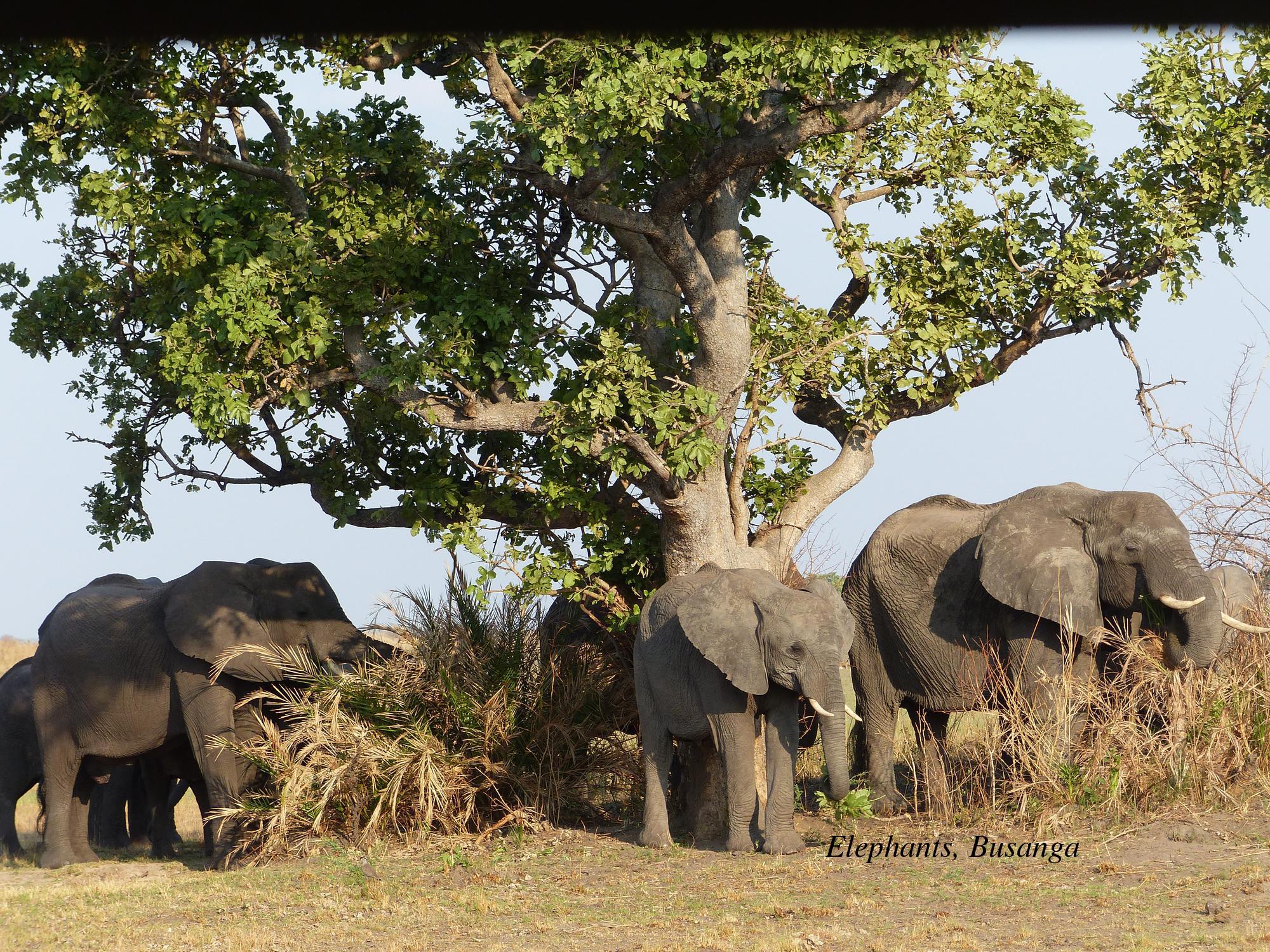
The Kafue River Lodge, opened in 2006 on the grounds of a former prospecting camp, perhaps best showcases the innovatory conflict mitigation work being spearheaded by the owners. Not only do they employ men and women from the nearby villages with good wages and non-extractive dignified work, they pay for anti-poaching patrols.
One staffer is Everisto Kambobe, a guide and expert on local plants and trees and their medicinal uses. He takes us fishing, and while pulling in a largemouth bream, he shares he once was a poacher. He confesses he was young, and didn’t know better. But the opportunities afforded at these lodges allowed him to switch to guiding, and to recognize that if an animal is poached, it is a one-time event; but preserved, it can be shot by cameras a thousand times. He tells about a time he guided a European couple into the park, and when they came across a slaughtered elephant, tusks severed and gone, his guests burst into tears. Now Everisto says he cries when he hears an animal has been poached.
Everisto is also an honorary wildlife police officer, conducting anti-poaching patrols from these bases when not guiding. The owners of these lodges provide food, transport and lodging for anti-poaching teams, and the efforts have made a difference, as increasing wildlife numbers show. A recent aerial survey of Kafue by The Zambian Department of National Parks and Wildlife revealed that red lechwe have increased in numbers by 487%, puku by 103%, Lichtenstein’s hartebeest by 78%, and blue wildebeest by 113% over the past ten years.
But the owners also believe education is a key to eliding conflict into co-existence. General Manager Idos Mulenga, also known as King of the Kafue for his reign as longest-serving guide in the park, takes us to his nearby village, Jifumpa, where the lodge owners built a clinic, and a borehole for the school. Teachers and children used to walk four kilometers to the Lunga River to draw drinking water. That left little time for actual education, and several qualified teachers left, citing lack of water. Now, good teachers are slaked and staying. In addition, the lodge owners helped to expand the school, and fund housing for teachers. The hope is that teachers will impart the benefits of wildlife preservation, and inspire pursuit of the “peace jobs” available in tourism, which in turn help families and communities prosper. Idos has a son studying medicine at university, and the lodge owners covered the fees. “If today the President of Zambia gives me a free hunting license and says, ‘Idos, go and enjoy,’ I would just throw it away. I would tear it to pieces. The animals have become part of my life. And my hope is that future students will say, ‘When I finish school, I want to be like Idos. I want to be a good guy.’”

If there is desire to see Africa as Livingstone did, without herds of safari vehicles and bloats of khaki, Kafue National Park is the place. The variety and numbers of animals are among the greatest on the continent, and the land remains undressed, wild and as beautiful as when the first Portuguese traders stepped over the horizon. The reach to sustainability and co-existence between people and wildlife may be with conservation lodges such as these. Because this portfolio is entirely private, there is no subornation in the chain. Monies in don’t line pockets, but instead pay salaries and go directly to community works. Yes, this only works on a small scale, but it may prove a model, and if so, it may spread.
This trinity of lodges in and alongside the larger-than-life Kafue National Park may indeed offer The Last Real Safari, and participating not only offers a profound awe, solace and personal state of grace, but helps keep what is rightly wild stay that way.
